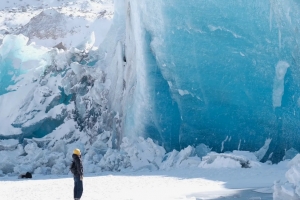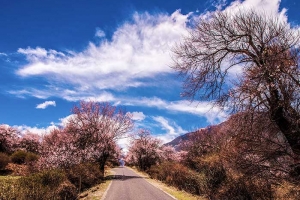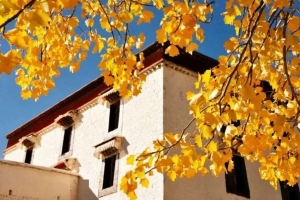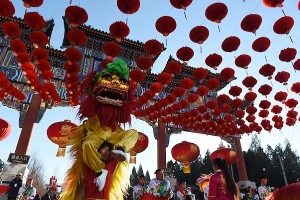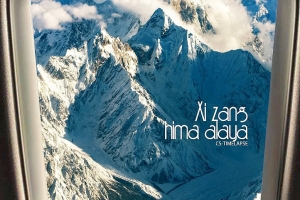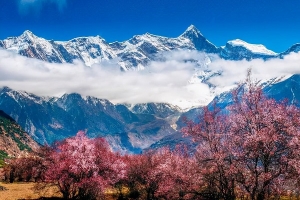Tibet, the ethereal land of towering peaks and ancient mysticism, cradles within its vast expanse three celestial lakes—each a shimmering reflection of the heavens above. Namtso, Yamdrok, and Manasarovar are not just bodies of water; they are sacred entities, woven into the spiritual fabric of Tibetan Buddhism and Hinduism. With their glassy surfaces mirroring the cosmos and their shores steeped in legend, these lakes beckon travelers seeking both beauty and transcendence.
Namtso: Where the Sky Descends to Earth
Namtso, meaning “Heavenly Lake,” is a vision of serenity and boundless horizons. Resting at a breathtaking altitude of 4,718 meters (15,479 feet), it stretches across the Tibetan Plateau like a vast pool of liquid sapphire, encircled by the snow-laden peaks of the Nyenchen Tanglha range.
A Dream in Blue
Approaching Namtso feels like stepping into a world where sky and water become one. Its mirror-like surface shifts between shades of turquoise and deep cobalt, reflecting the celestial dome above with surreal clarity. The wind carries the scent of untouched wilderness, and the gentle lapping of the waves against the rugged shoreline creates a rhythmic hymn to solitude.
A Sacred Pilgrimage
For centuries, pilgrims have walked the kora around Namtso’s sacred shores, believing its waters to be a celestial blessing. The Tashi Dor Peninsula, jutting into the lake, is home to meditation caves and remote monasteries where monks retreat into quiet contemplation. The lake is said to be the spiritual abode of Palden Lhamo, Tibet’s fierce guardian goddess, her unseen presence lingering in the crisp mountain air.
When to Lose Yourself in the View
The best time to visit is between May and October, when the ice melts to reveal the lake’s true splendor. During winter, Namtso transforms into a frozen world of eerie stillness, the vast expanse of ice reflecting the endless sky in a stark, otherworldly contrast.
Yamdrok: A Dragon’s Slumber in Turquoise
Like a mythical dragon coiled around the hills, Yamdrok Lake winds its way through the undulating terrain of Tibet. It is a freshwater jewel, resting at 4,441 meters (14,570 feet), its radiant blue waters a sharp contrast against the arid golden slopes that cradle it.
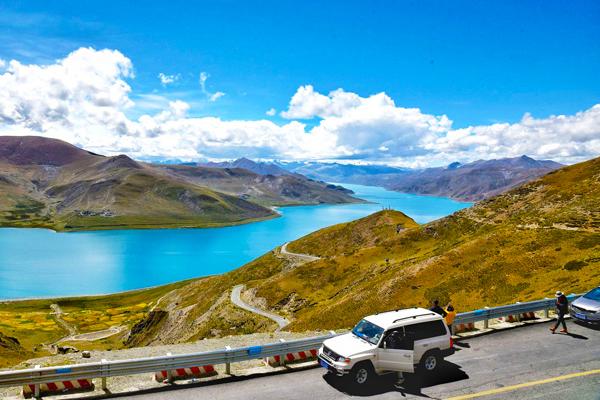
A Serpent of Sapphire
The first sight of Yamdrok from the Kamba La Pass is nothing short of mesmerizing. The lake’s irregular, serpentine shape reveals hidden inlets and secluded shores, each turning of the road offering a new perspective on its dazzling, ever-shifting hues. Unlike the vast openness of Namtso, Yamdrok’s winding form gives it an air of mystery—something untamed, yet deeply sacred.
The Beating Heart of Tibet
Yamdrok is believed to be the lifeblood of Tibet, an embodiment of divine energy. Legend holds that if its waters were to dry up, the land itself would wither. The Dalai Lamas, too, are connected to its sacred essence; monks seek guidance from its depths when selecting the next spiritual leader of Tibet.
The Perfect Moment to Gaze into the Waters
April to October unveils the lake’s full brilliance. In summer, nomads graze their yaks along the shoreline, their tents dotting the golden hills. In autumn, the skies clear, allowing for a crisp reflection of the surrounding peaks in the lake’s glassy surface.
Manasarovar: The Lake That Remembers the Gods
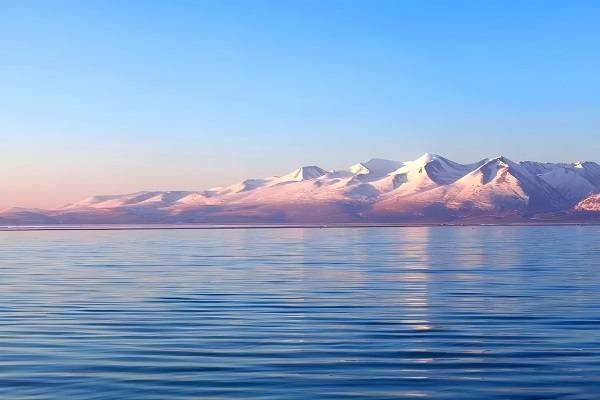
Nestled in the shadow of the revered Mount Kailash, Lake Manasarovar is more than just a body of water—it is a place where the divine and the earthly meet. At 4,590 meters (15,060 feet), it is one of the highest freshwater lakes in the world, its deep blue waters an eternal witness to the footsteps of pilgrims who have sought purification on its shores for millennia.
A Reflection of the Eternal
At dawn, Manasarovar awakens in hues of gold and crimson, its still waters mirroring the first light of day. On calm afternoons, the towering silhouette of Mount Kailash shimmers in its depths, an ethereal vision that has inspired poets and seekers for centuries. Unlike the other two lakes, Manasarovar’s spiritual presence is almost tangible, its tranquil surface hiding the echoes of countless prayers.
Where Myths and Mortals Converge
Hindus believe that Lord Brahma created Manasarovar as a celestial bathing pool for the gods, while Buddhists regard it as a manifestation of purity, capable of cleansing the karma of a hundred lifetimes. Pilgrims undertake the arduous 90-kilometer kora around the lake, seeking enlightenment with each step. Some take a ritual dip in its icy waters, braving the chill in the hope of absolution.
When to Walk Along the Edge of the Divine
From May to September, the lake is most accessible, drawing pilgrims and travelers alike. Full moon nights are especially revered, when the lake is believed to be at its most spiritually potent, glowing softly under the celestial canopy.
A Journey Beyond the Horizon
The Three Sacred Lakes of Tibet are more than just geographical wonders—they are reflections of the divine, their silent waters holding centuries of devotion, legend, and longing. Whether drawn by their ethereal beauty or the whispers of ancient myths, those who make the journey to these celestial shores find themselves staring into something far greater than just a lake. They find themselves gazing into eternity.


